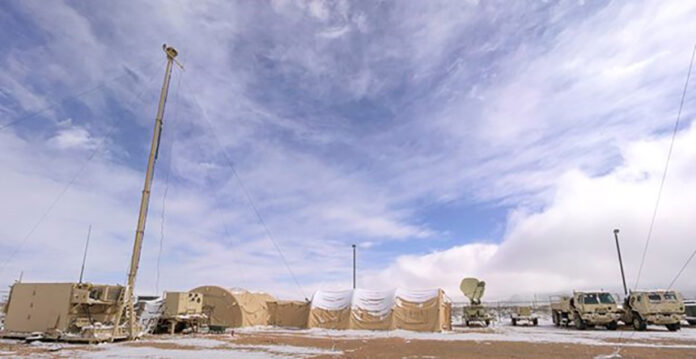Northrop Grumman’s Integrated Battle Command System (IBCS) developed primarily here at Redstone Arsenal successfully completed two recent U.S. Army flight tests at White Sands Missile Range, New Mexico, further demonstrating the system’s scalability and resiliency to enable all-domain command and control capabilities.
The White Sands tests utilized operationally realistic scenarios with soldiers of the U.S. Army 3rd Battalion, 43rd Air Defense Artillery (ADA) Regiment at the controls of the system.
They are part of the Initial Operational Test and Evaluation (IOT&E) of IBCS, in which the system is evaluated on its operational performance prior to deployment and full-rate production.
IBCS has an open, modular and scalable architecture that is foundational to integrating all available assets in the battlespace, regardless of source, service or domain. Its architecture enables the efficient and affordable integration of current and future systems.
“We continue to demonstrate our architecture’s power to leverage information from every domain, delivering unprecedented situational awareness and increased time and options to warfighters,” said Christine Harbison, vice president and general manager, combat systems and mission readiness, Northrop Grumman. “IBCS’s maturity and ability to connect legacy systems significantly helps to expand their mission capability.”
In the first flight test, the U.S. Army intercepted a high-performance, high-speed tactical ballistic missile (TBM) target using IBCS, aided by Northrop Grumman’s Joint Tactical Ground Station (JTAGS) which delivered space-based sensor data to the system for early warning of an inbound TBM launch. IBCS established a track from the JTAGS data before ground-based sensors were able to detect the target, thus providing increased situational awareness for the operators.
During the second flight test, IBCS demonstrated the resilience of the system to defeat two cruise missile targets in a stressing electronic attack environment. IBCS was able to maintain continuous track custody of the targets by fusing data from multiple sensors degraded by electronic attack.
Northrop Grumman developed IBCS with the Army as the cornerstone of their integrated air and missile defense (IAMD) modernization program. More than 500 of Northrop Grumman’s approximately 2,000 employees in the Huntsville area are involved in IBCS work.
Don’t miss out! Subscribe to our email newsletter to have all our smart stories delivered to your inbox.



